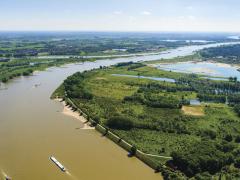Global inland-water oxygen cycle has changed in the Anthropocene
Inland waters are an important resource, a highly diverse habitat, and a key component of global biogeochemical cycles. Oxygen plays a major role in inland-water ecosystem functioning, but long-term changes in its cycling remain unknown. Here, we quantify global inland-water oxygen production, consumption, and exchange with the atmosphere during 1900–2010 using a spatially explicit, mass-balanced, mechanistic model that takes into account changes in climate, hydrology, human activities, and the coupled biogeochemical (oxygen-nutrient-organic matter) dynamics.
The model results show that global inland-water oxygen turnover increased during 1900–2010: production from 0.16 to 0.94 Pg year−1 and consumption from 0.44 to 1.47 Pg year−1. Inland waters overall remained heterotrophic and a sink of atmospheric oxygen. Direct human perturbations (changes in hydrology and nutrient supply) were more important in increasing oxygen turnover than indirect effects via warming.
Authors
Specifications
- Publication title
- Global inland-water oxygen cycle has changed in the Anthropocene
- Publication date
- 4 April 2025
- Publication type
- Article
- Page count
- 12
- Publication language
- English
- Magazine
- Science advances
- Issue
- vol 14, nr 14
- Product number
- 5901




